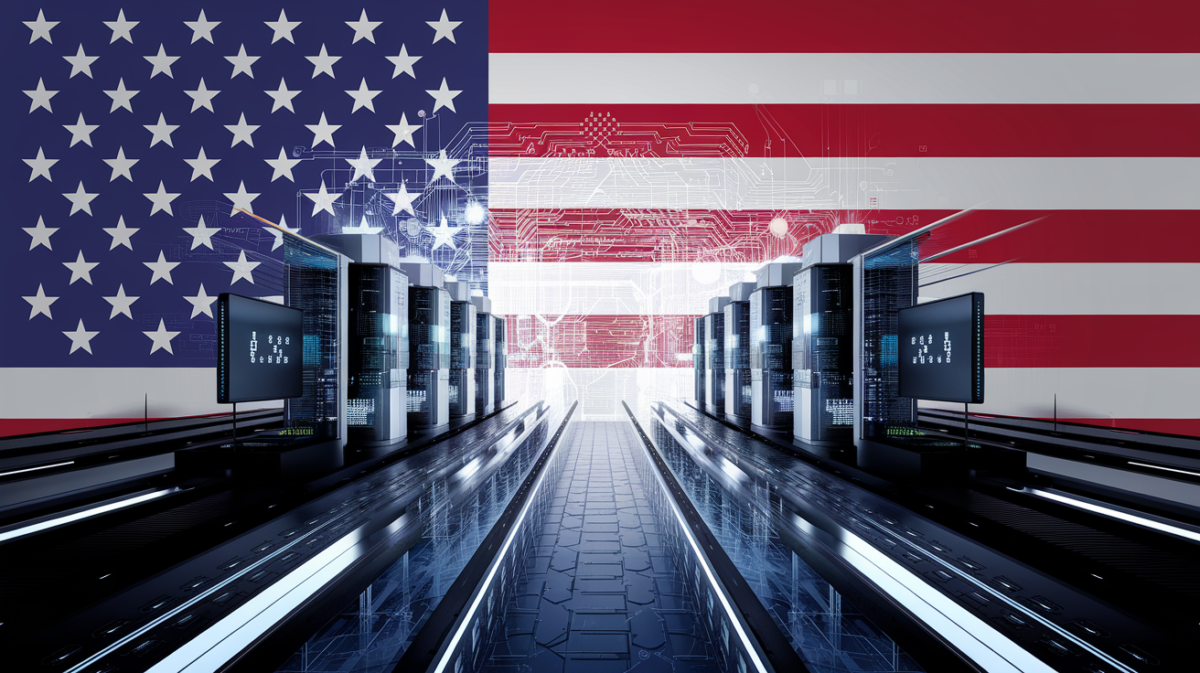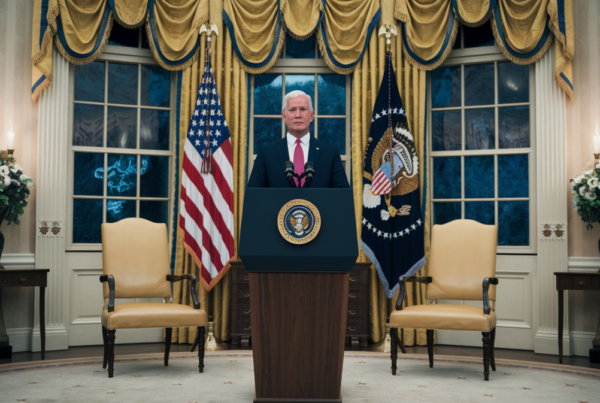President Donald Trump has launched a sweeping artificial intelligence initiative that promises to transform how America develops and deploys AI technology. The comprehensive “AI Action Plan” represents a dramatic shift from previous policies, focusing on rapid development, reduced regulation, and maintaining global technological supremacy against international competitors like China.
Core Components of the AI Strategy
The new policy framework centers on three main pillars designed to accelerate American AI advancement while reducing federal oversight. This approach marks a significant departure from the more cautious regulatory stance of the previous administration.
Streamlined Infrastructure Development
The plan prioritizes the rapid construction of AI data centers across the nation by cutting through traditional regulatory barriers. Trump’s initiative aims to fast-track permitting processes that have historically slowed technology infrastructure projects. Environmental regulations that previously required extensive review periods will be relaxed to enable quicker deployment of these critical facilities.
Energy requirements for AI operations demand substantial power generation capacity. The plan explicitly promotes domestic energy sources including natural gas, coal, and nuclear power to meet these growing demands. This energy-first approach reflects the administration’s broader push toward energy independence while supporting the massive computational needs of modern AI systems.
Export Expansion Initiative
American AI technologies will receive enhanced support for international sales through the new policy framework. The administration plans to remove trade barriers and streamline export processes for U.S.-developed AI innovations. This component aims to expand American technological influence globally while generating revenue for domestic companies.
The export promotion strategy directly targets international markets where American companies compete with Chinese and European alternatives. By facilitating easier overseas sales, the plan seeks to establish American AI as the global standard.
Addressing Ideological Neutrality in Government AI
One of the most controversial aspects of the new policy involves mandating “ideologically neutral” AI systems within federal government operations. An executive order specifically prohibits AI applications that promote concepts related to diversity, equity, inclusion programs, critical race theory, or systemic racism discussions.
This directive applies to all AI systems purchased or developed for federal use. Government agencies must ensure their artificial intelligence tools avoid what the administration characterizes as political bias. The policy extends to contractors seeking federal AI contracts, requiring them to demonstrate ideological neutrality in their systems.
Industry Response and Compliance
Major technology companies including Microsoft, Google, and OpenAI have generally welcomed the deregulatory aspects of the plan. Industry leaders appreciate the reduced regulatory burden and increased infrastructure investment opportunities. However, the ideological neutrality requirements have created implementation challenges for companies serving both government and private sector clients.
- Faster data center approvals reduce project timelines
- Relaxed environmental standards lower construction costs
- Export promotion opens new revenue streams
- Ideological requirements may necessitate separate government-specific AI versions
Competitive Positioning Against China
The AI Action Plan explicitly aims to counter China’s growing influence in artificial intelligence development. American policymakers have expressed concern about falling behind in critical technology sectors. This initiative responds to those concerns through aggressive domestic investment and reduced regulatory friction.
Chinese AI companies have made significant advances in recent years, particularly in areas like facial recognition, natural language processing, and autonomous systems. The Trump administration’s plan seeks to accelerate American development to maintain technological leadership.
Strategic Advantages and Challenges
| Advantages | Challenges |
|---|---|
| Faster infrastructure deployment | Potential environmental concerns |
| Increased private investment | Implementation complexity |
| Enhanced export opportunities | International regulatory alignment |
| Reduced compliance costs | Bias detection difficulties |
Public and Expert Reactions
The artificial intelligence community has responded with mixed reactions to the comprehensive policy changes. Technology industry representatives generally praise the reduced regulatory burden and increased infrastructure investment. They argue these changes will accelerate innovation and help American companies compete more effectively internationally.
Civil rights organizations and some AI researchers have raised concerns about the ideological neutrality requirements. Critics argue that requiring “neutral” AI may actually introduce bias by avoiding discussions of existing societal inequalities. They worry that this approach could undermine efforts to develop fair and equitable artificial intelligence systems.
Academic and Research Perspectives
University researchers and AI ethics experts have expressed particular concern about the long-term implications of the new policy. Some argue that truly neutral AI is impossible to achieve, as all systems reflect the biases of their training data and developers. Others support the administration’s focus on rapid development but question specific implementation approaches.
Research institutions that receive federal funding may need to adjust their AI projects to comply with the new ideological requirements. This could affect ongoing studies related to bias detection, fairness in algorithmic decision-making, and social impact assessments.
Implementation Timeline and Next Steps
Federal agencies have received directives to begin implementing the new AI policies immediately. The administration expects to see measurable progress in data center construction within six months. Export promotion initiatives will launch in the coming weeks with new trade facilitation programs.
Government AI procurement processes will incorporate the ideological neutrality requirements for all new contracts. Existing contracts may need modification to ensure compliance with the updated standards. This transition period will likely create temporary disruptions as agencies and contractors adapt to the new framework.
Long-term Impact on American Technology
The AI Action Plan represents one of the most significant shifts in American technology policy in recent years. Its success will largely depend on effective implementation and industry cooperation. The reduced regulatory approach may accelerate innovation but could also create new challenges around safety and fairness.
International competition in artificial intelligence continues to intensify, making the timing of these policy changes particularly significant. American companies now have clearer government support for rapid development and global expansion, potentially strengthening the nation’s position in the global AI marketplace.
The coming months will reveal how effectively the new policies translate into practical advantages for American AI development. Industry observers will closely monitor infrastructure construction progress, export performance, and the practical implementation of ideological neutrality requirements across government systems.







